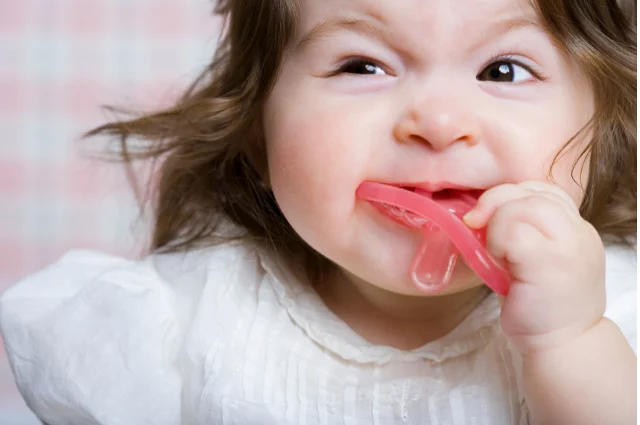Pacifiers are also known as soothers or dummies. They are items used by most parents to soothe their babies when discomforted. They are also used to promote sleep. Extended use of pacifiers can cause dental problems and speech delays, among other things. Hence parents try to wean their kids off these soothers after a while. Pacifier withdrawal symptoms are the discomfort, obsessiveness, and behavioral changes some children experience when their parents try to wean them off their pacifiers. This blog post will examine some pacifier withdrawal symptoms and helpful strategies to support your child during the process to ease the transition.
Hey! By the way… any links on this page that lead to products on Amazon are affiliate links and I earn a commission if you make a purchase. Thanks in advance – I really appreciate it! .
5 Pacifier withdrawal symptoms you need to watch out for
1. Sleep issues after taking the pacifier away
Depending on your child’s age or temperament, taking away the pacifier from them can affect their sleep in various ways. For younger children, sucking on the pacifier helps them self-soothe and fall asleep quickly. Taking the pacifier from such children can alter their sleep routine, making it harder for them to sleep. For toddlers and slightly older kids, the pacifier is more of a comfort object that helps them cope with stress and anxiety. Taking it away from such kids can lead to feelings of insecurity at night, resulting in sleep disturbances and staying awake for hours at night.
2. Pacifier separation anxiety
Young children can become too attached to their pacifier that they will likely experience distress and discomfort when it is taken from them. They will experience what is known as pacifier separation anxiety. They become restless and upset and may cry for hours unending. They will also find it difficult to sleep without the pacifier. This separation anxiety is similar to what children experience when separated from their parents or caregivers due to strong attachments formed over time.
3. Loss of appetite
Another symptom of pacifier withdrawal to watch out for is loss of appetite. Children may lose interest in eating because of the sadness they are experiencing. They can become so emotionally destabilized that nothing will seem appealing anymore, not even their food. They may also cry if you should force them to eat.
4. Crying and tantrums
Crying and tantrums are the most common signs experienced by a child struggling to accept the withdrawal of their pacifier. Their pacifiers have become their source of quick comfort for a long time, so taking them away can be challenging to cope with. They will usually turn to crying and throwing tantrums all the time while hoping to get their pacifiers back. Also, crying is a natural way babies react to change, so it is expected even in this case.
5. Increased thumb-sucking
Young children naturally suck their thumbs by reflex. It is one of the ways they self-soothe besides sucking on the pacifier. When you withdraw their pacifier from them, they naturally turn to thumb-sucking to console and compensate themselves for their “loss.” However, you should expect to see a lot more sucking of the thumb this time.
How long does pacifier withdrawal last?
Young children can show pacifier withdrawal symptoms for a period lasting from a few days to a few weeks. Some factors determining how long this period will be for individual children are their age, temperament, and how attached they are to their pacifiers. This period can, however, be shorter for younger children.
How to deal with pacifier withdrawal?
Dealing with pacifier withdrawal can be challenging for both parents and children. The following tips can help make your child cope with the situation.
- Prepare your child: It would help to talk to your child before withdrawing their pacifier. Talk to them about why they should give it up and explain to them the process it will involve. Also, let them know of the challenges they may face at first and encourage them that they will certainly feel better with time.
- Gradual weaning: Rather than withdrawing the pacifier abruptly, you may decide to do so gradually. Do this by progressively limiting the pacifier to bedtimes or naptimes. With time, decrease further its use at the allowed times. Your child will eventually learn to fall asleep with the pacifier after some time.
- Positive reinforcement: Praise and reward your child to encourage them to stay without the pacifier. Show them you are pleased with them when they stay a long while without demanding it.
What is a good replacement for a pacifier?
You can offer your child several alternatives to help them self-soothe other than using a pacifier. These include:
- Swaddling: By swaddling your baby in a blanket, they can get a sense of security which can help them feel calm. That will help them sleep easily, the same way the pacifier will do.
- Toys: Help your child cope with the absence of the pacifier by offering them alternative ways to self-soothe. You can get them a favorite toy or some stuffed animals.
- Thumb or finger sucking: Your baby may naturally suck on their thumb or fingers for comfort. That can soothe them the same way a pacifier would do.
Conclusion
Please note that all children are unique, so no one method will work for them all. Feel free to try as many ways as possible to help your child overcome the distress of being without their pacifier. When you finally find a method that works, stay consistent for faster and better results. Be patient with them and trust that they will eventually adjust to life without a pacifier.


